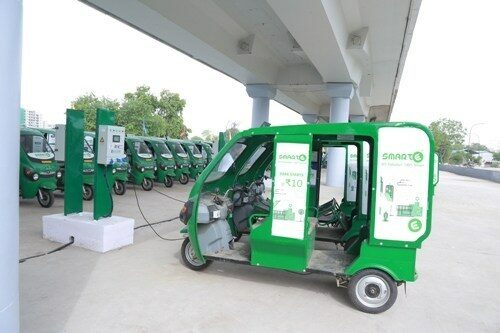According to the urban ministry, over 326 km of metro lines are in operation in the last five years and 373 km are in the process and the goal is to assure that the economic cost mass transition mode is chosen for public transport
As Metro rail systems Extending across India, the Ministry of Housing and Urban Affairs (MoHUA) has shifted its focus to improving last mile connectivity, one of the goals uttered in the 2017 national metro policy.
The ministry has started concentrating on feeder bus services, electric rickshaws, smart cycles (that can be rented out), electric scooter services, and partnerships with cab aggregators for implementing simple last mile connectivity to the passenger.
As per the national metro policy 2017, the goal is to ensure that the economic cost mass transit mode is selected for communal transport.
Each state must establish the metro self-sustaining, improve other kinds of mass lively transport systems, such as monorails or buses, and provide last mile connectivity, between the metro station and the passenger’s destinations.
Union minister of housing and urban affairs Hardeep Puri said in an interview. “We have already drafted a last-mile connectivity plan across all operational metros; the aim is to provide a safe and economical ecosystem for daily commuting,”
The Union government has now outlined a last-mile connectivity plan for 10 metros in cities such as Delhi, Bangalore, and Kochi.
The national metro policy had also intended to improve metro rail incomes through a feeder system.
“Every proposal for metro rail should necessarily include proposals for feeder systems that help to enlarge the catchment area of each metro station at least to 5 km. Last-mile connectivity through pedestrian pathways, Non-Motorised Transport (NMT) infrastructure, and induction of facilities for paratransit modes will be essential requirements for availing any central assistance for the proposed metro rail projects,” the policy noted.
Around 329 feeder bus services have been made operational by the Centre already.
This involves an ambitious plan for Delhi and the National Capital Region, assisted by Delhi Metro Rail Corporation (DMRC).
“With the objective of strengthening feeder bus services with defined service quality parameters, DMRC is in the process of inducting (through open e-tenders) 427 buses (MIDI size battery operated/CNG air-conditioned buses) on 48 routes on cluster model. However, approval of Government of National Capital Territory of Delhi (GNCTD) on sustaining the project by way of viability gap funding is awaited,” a ministry official said on condition of anonymity.
The Centre is also striving on a pilot project connecting cab aggregators which have been allocated space on rent at metro stations to set up booths where cabs can be booked.
According to the official “Process of allotment of bare spaces to the cab aggregators at all the metro stations is also underway for which the DMRC has already floated a tender,”.
The policy also mandates the study of choices, compelling evaluation of other methods of mass transit such as Bus Rapid Transit System (BRTS), light rail transit, tramways, metro rail and regional rail in terms of demand, capacity, cost, and ease of implementation.
According to officials “The alignment of metros such as Ahmedabad metro rail project phase-I is such that it integrates with BRTS, Indian Railways, and the city bus service at various strategic locations in both East-West and North-South Corridors for seamless connectivity. Future transit systems such as the Mumbai–Ahmedabad high-speed bullet train will also integrate with phase-I at two locations,”.
Metro connectivity with BRTS at Ahmedabad is implemented at nine stations currently. The Centre is also operating towards combining electric vehicle transportation.
A pilot is being undertaken by DMRC in five metro stations; in Chennai, it is already operational in two stations; and it is also operational in Hyderabad, according to the ministry.
Another perspective of non-motorised transportation includes cycle sharing services which are currently operational in metros across eight cities.
“Last mile connectivity is very important especially in cities such as Delhi because of its circular structure. Another very important reason for having connectivity is safety especially for women,” said KT Ravindran, professor and head of urban design at the School of Planning and Architecture of New Delhi.
According to former DMRC chairman Elattuvalappil Sreedharan, the country must have the intuition to preface metro trains in more than two million cities and light metros in around one million cities within the next 10 years. “This would need metros to be built at the rate of at least 200 km per year,” he said.

